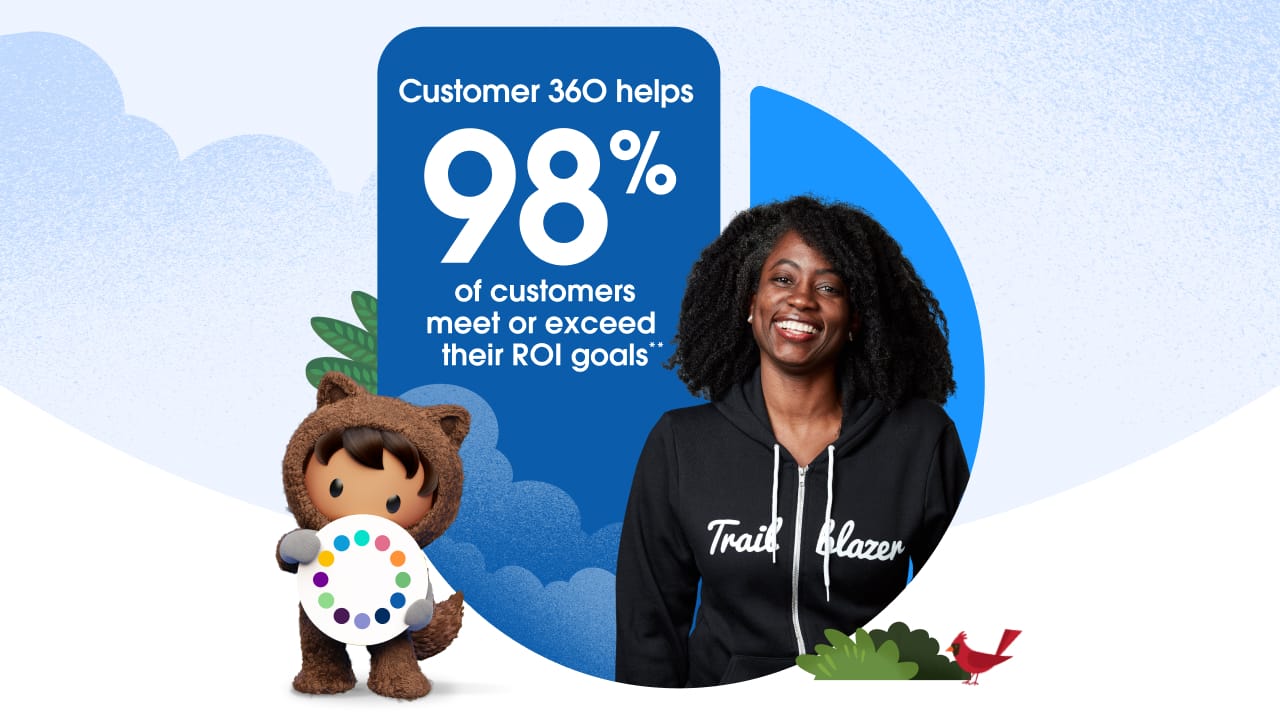Lots of people waste lots of time doing things that don’t add value to their jobs or their business. You’ve dipped your toe into automating some of them. Time to dive in and see what’s possible.
Imagine how much more productive and efficient you could be if you could take all of the repetitive, routine, manual work out of your day. Imagine if that kind of work were simply done for you, freeing you up for the value-added work that drives success for you, your business, and your customers.
A growing number of companies are going beyond simply imagining it. Business leaders are prioritising technology investments that drive efficiency and productivity. And business automation, like the kind enabled by MuleSoft, is at the top of that list.
Companies have been investing in business automation for decades to eliminate manual tasks and free people to focus on things that drive growth. Those investments have accelerated as automation has gotten more sophisticated and spreads to every corner of the organisation. Eighty-five percent of organisations said in a 2021 Deloitte study they are rethinking how work gets done, and are moving from task-based automation to end-to-end automation.
Deliver success now
Learn how the right technology investments help you increase efficiency, improve results, and lower costs.

The scale, scope and reasons for automating business processes continue to evolve.
“During COVID-19, managing costs was the primary driver for automation,” said Joe Surprenant, sales leader across Deloitte’s artificial intelligence (AI) and data ops practices. “As we start to emerge from the pandemic and we see new talent models develop, it’s about automation as an assistant to drive more efficiency for businesses.”
Companies that take this broader view of automation have saved hundreds of millions of euros and increased productivity, he said, pointing to examples in financial services, insurance, and pharma.
Despite the growth in automation, companies can still do much more to automate processes end-to-end rather than simple, task-based desktop automation.
Automating tasks makes workers happier and more productive
Many knowledge workers waste a lot of time manually entering and retrieving information between multiple systems as part of a multi-step, manual process. This is not the best use of a person’s time and could erode morale and employee engagement.
“Automating rote tasks gives workers empowerment to focus on the more strategic things they want to do, the reason they took the job,” Surprenant said. “Leveraging automation keeps up the energy and the enthusiasm of the workforce, which is a huge imperative given the talent crunch. Automation is playing a major role in workforce engagement.”
He said it even starts before someone is hired. When HR processes are automated, it sends a positive signal to prospective employees that the company is digital-first.
How can companies identify opportunities for automation? Matt McLarty, global field chief technology officer and vice president of the digital transformation office at Mulesoft, said one large financial services firm did it by asking employees a simple question: What’s the dumbest thing you have to do every day?
“They made it into a contest, with prizes,” he said. “People were so frustrated about wasting their time on this stuff that they volunteered all this information, which created a groundswell for the company to automate those things.”
Business automation can be applied anywhere, and everywhere
You don’t need to understand how automation works. You just need to understand its impact and how powerful it can be. Here’s how different departments can use automation to reduce manual processes, cut costs, reduce inefficiencies, and serve customers and employees better:
Finance and Accounting
Automating financial planning and accounting functions frees up time for more strategically important things like analysis, strategy, and collaboration with stakeholders. One example is accounts payable. Data capture is automated (no more digging through miles of spreadsheets), invoices are automatically matched to relevant documents, and approvals are routed. This is not only more efficient, it reduces the risk of errors.
Marketing
There is no value in having to press “send” on every email, campaign, or social media post you create. By automating marketing, you can target customers with automated messages across multiple channels. The best tools help you identify your audience, design the most relevant content, and automatically trigger actions like offers based on schedules and customer behaviour. These efforts can then be aligned with a customer relationship management (CRM) system.
Customer service
It doesn’t take a human to answer basic questions like “How do I reset my password?” or “Where’s my order?” Chatbots, voice bots, and self-service are already in wide use, freeing up agents to help customers navigate more complex service situations. Next-generation service automation, using AI, augmented reality, and the Internet of Things (IoT), can predict service events and resolve them through digital channels. And it can give customers a total view of service activity for self-service support and automated monitoring.
Human resources
HR systems can automate a wide range of tasks, from job application processing, response tracking and interview scheduling to job offers, onboarding and offboarding, payroll management, and benefits administration. Using analytics, these systems can also provide insights into workforce sentiment, productivity, and engagement.
Sales
One management consultancy estimated that about one-third of all sales tasks can be automated, yet many business decision-makers don’t take advantage of the capability. Sales strategy and planning, lead identification and qualification, configuration, pricing and quotation, order management, and post-sales are all areas ripe for automation. Early adopters, the firm noted, consistently report increased customer-facing time, higher customer satisfaction, and efficiency improvements of up to 15 percent.
“A bot can sell a product or service,” said Tim Cortinovis, author of several books on automation. “A higher-value salesperson is selling and forging a connection between the customer and the business, which is more valuable.”
Leaders need to consider business automation a strategic asset
Like other digital transformations, the success of end-to-end automation relies on cultural changes driven from the top and executed in each function. Training, incentives, and key performance indicators are all essential.
Spending on the two primary types of business automation, robotic process automation and intelligent process automation, is expected to hit $19.3 billion this year, up from $13.6 billion two years ago. The impact is profound, affecting the way we work, compete, innovate, and serve customers.
“It takes a strong leader and strong head of the functional area to have the vision to say, ‘I know it’s tough and it’s going to be disruptive to our business to change the way we work, but if we don’t, we are going to lose talent, we’re going to lose to our competition, and we’re going to be left behind,’” Surprenant said.
Deliver success now
Learn how the right technology investments help you increase efficiency, improve results, and lower costs.


























